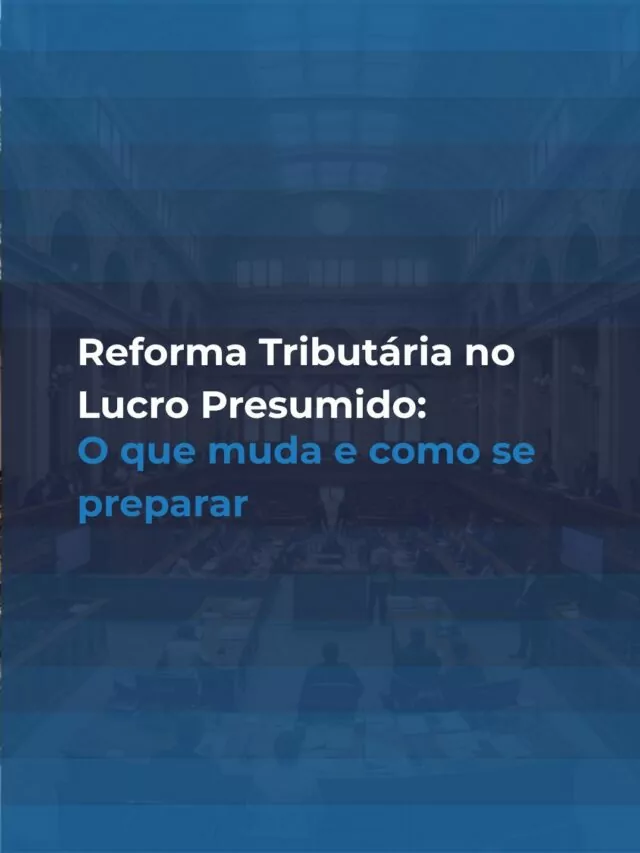The Severance Indemnity Fund (FGTS) is a mandatory monthly deposit made by the employer on behalf of each employee with a formal contract. Created to protect employees dismissed without just cause, the FGTS consists of a "forced savings account" at the Caixa Econômica Federal. As a rule, all companies must deposit 8% of salary of each employee by the 7th of the month following the month worked.
This percentage is levied on salaries, 13th salary, overtime and other salary amounts. It is worth noting that this figure is not deducted from salary of the employee - this is an exclusive obligation of the employer. In short, any company that has employees governed by the CLT, or rural workers, domestic workers, independent contractors, etc., is obliged to pay the FGTS.
In this article, we clearly explain the consequences of keeping the FGTS on time and how to avoid losses for your company.
Listen now to a special episode of our podcast, in which CLM Controller experts explain, with practical examples, how to keep FGTS up to date and guarantee security in labor management.
Risks and penalties of FGTS in arrears
Keeping FGTS in arrears entails serious risks losses financial and legal. Among the main risks are:
- High interest and fines: the company pays a fine for late payment, as defined by law. The FGTS Law (Law 8.036/90) provides for a fine of 5% on the amount due in the month in which it falls due and 10% from the following month. In addition, late payment interest of 0.5% per month (plus updating by the Referential Rate) is charged on the outstanding balance. In other words, the debt increases significantly with each month that you stop paying.
- Legal impediments: As long as the company owes FGTS, it is prohibited from taking some common measures. For example, it cannot pay pro-labore to partners or distribute profits and dividends until the situation is regularized (art. 50 of Decree 99.684/90). If the default is persistent, it is also prevented from receiving tax incentives and financial benefits from any governmental sphere (art. 51).
- Blocking certificates and contracts: a company with FGTS in arrears is unable to issue the FGTS Regularity Certificate (CRF) nor the Debt Clearance Certificate (CND) of the FGTS. This prevents them from taking part in tenders, signing contracts with public bodies or obtaining credit from banks. In short, the company loses legal guarantees and access to benefits until it pays off the arrears.
- Inspection and fines: The Ministry of Labor has intensified its inspection of the FGTS (with the FGTS Digital project) and labor inspectors have the power to identify unpaid debts. If the company is found to be in arrears, it will be fined and will have to pay the amounts due with all fines and interest, as well as any administrative fines. In 2022, for example, the inspectorate recovered around R$ 5.8 billion in FGTS debts, showing that delays generate rigorous collections.
- Labor lawsuits: employees who have suffered damage can bring a claim in the Labor Court. Even if the delay alone does not constitute certain grounds for indirect termination, it represents labor damages. The worker can sue for the payment of overdue payment slips, receive severance pay (with a 40% fine) or other rights, which increases the responsibility of the employer. financial of the company. In addition, successive delays tarnish the company's image in the eyes of employees, unions and the market.
Read more about: CND - Debt Clearance Certificate: see how to issue it
In short, being late with FGTS means fines, interest, bureaucratic obstacles (no CRF/CND) and the risk of lawsuits. The consequences range from financial charges to sanctions that can jeopardize business, such as losing public contracts or credit. Keeping deposits up to date is crucial to avoid legal and credibility problems.
The role of FGTS Digital in inspection
Since the implementation of Digital FGTSAs a result, control over tax payments has become even stricter. The new platform, integrated with eSocialThis allows the government to monitor deposits with greater precision and agility, quickly identifying delays or inconsistencies.
In addition to making it easier for employers to comply with their obligations, the Digital FGTS also streamlines collection and inspection processesThis reduces the time between default and assessment.
Do you want to better understand how the Digital FGTS works and how it impacts the routine of companies? Watch the video below produced by CLM Controller:
How to settle FGTS arrears: step by step
To settle the outstanding FGTS, the entrepreneur must follow a clear and organized procedure. Below are the main steps for paying overdue debts:
- Identify overdue periods: check exactly which months or years have not been deposited. This can be done by checking pay slips, receipts or the employee's FGTS statement (via the Caixa website/app or a letter sent to the worker). Careful investigation avoids leaving any outstanding amounts hidden.
- Calculate the amounts due: with the arrears in hand, use the official system to include corrections. In general, download the FGTS monetary update index for the period (available on the Caixa website) and import it into a tool such as SEFIP or the FGTS Digital system itself. These tools automatically calculate the amount of the original deposit, plus the corresponding fine and interest.
- Generate payment slips (GRF): in SEFIP (or FGTS Digital/eSocial), open a new movement type "FGTS in arrears" and enter the planned payment date. The system will issue a FGTS Collection Form (GRF) for each month or employee in debt. If you prefer, this procedure can also be done directly at a Caixa branch: present the company and employee details to issue the GRF for the outstanding amounts.
- Pay the bills generated: pay all GRFs due. Payment will be made through the bank network, respecting the amount indicated with fines and interest. It is important to keep your payment receipts. After a few days, check on the FGTS website or with your accountant that the payment slips have been cleared in the employees' linked accounts.
- Updating certificates and registers: after discharge, request the issuance of the FGTS Regularity Certificate to prove that there are no debts. File payment slips with HR or accounting and update tax returns (eSocial) if necessary. This will bring the company back into compliance and remove any legal impediments caused by the delays.
Conclusion
if there are a lot of installments, check with Caixa about the possibility of an installment plan or negotiation (available for employer FGTS). An accountant or specialized firm (such as CLM Controller) can advise on the correct calculation of values and the use of official systems, ensuring that all calculations are made in accordance with the law.

How to avoid future delays
The best way to deal with FGTS arrears is not to get to that point. Some practices help to keep payments up to date:
- Financial planning: set aside the amount corresponding to FGTS each month with the payroll. Treat it as a fixed expense, in the same way as salaries or INSS. Having guaranteed funds in cash prevents the company from postponing this payment in the event of a financial squeeze.
- Automated controls: use payroll software or eSocial itself to enter wages and taxes. Well-configured systems already automatically calculate the FGTS due and issue reminders or pre-filled forms. This reduces manual errors and forgotten months.
- Schedule of obligations: create alerts in the corporate calendar close to the 7th of each month to schedule FGTS payments. Implement internal routines, such as closing the payroll and checking charges, to anticipate possible pending payments.
- Regular internal audits: carry out regular checks (monthly or quarterly) with the support of the accounting or auditing department, checking that all payments have been made and reconciling them with the FGTS statement. Preventive action corrects errors right from the start.
- Dedicated accounting team: rely on a competent in-house or outsourced accounting department. Up-to-date professionals keep up with changes in legislation (such as the new Digital FGTS), ensure correct submission of information to eSocial and can even simulate financial scenarios to warn of possible delays.
With financial organization and accounting support, the company minimizes the risk of forgetfulness. Having access to an accountant or accounting services company (such as CLM Controller) is essential: these specialists can implement processes that guarantee compliance with all obligations, including the FGTS, keeping the company in good standing at all times.

Frequently Asked Questions about FGTS in arrears
1. What happens if I delay paying my FGTS?
The company is subject to fines, interestloses access to CRF (Certificate of Good Standing)It could be prevented from contracting with the public authorities and even run the risk of being sued in the Labor Court.
2. Does the employee suffer?
Yes, they may have difficulty withdrawing their FGTS in the event of dismissal, retirement, housing finance or serious illness. They can also take the company to court.
3. Can I pay the overdue FGTS in installments?
Yes, it is possible to negotiate an installment payment directly with Caixa Econômica Federal. You need to present the company's documentation and the amounts due.
4. Is the company obliged to pay interest and fines even if it regularizes spontaneously?
Yes. Law No. 8.036/1990 provides for a fine of 5% in the first month and 10% from the second, plus interest of 0.5% per month. These charges are mandatory, even in cases of self-regularization.
5. Does FGTS arrears block a negative certificate from the IRS?
Not directly. But it prevents the CRFwhich is also required for tenders and financing. Without it, the company could face similar obstacles to the lack of a CND.

Count on CLM Controller to keep everything up to date
Keeping labor charges up to date is a challenge for any medium-sized or large company. A CLM Controller offers specialized accounting and financial support so that you can avoid problems such as FGTS arrears. Our team provides guidance on the correct calculation of amounts, the use of official systems (SEFIP, eSocial/FGTS Digital) and the preparation of payment slips. We also help you implement internal controls and financial planning so that your company never misses a legal deadline again. This gives you peace of mind that you are in compliance with labor and social security legislation.
Contact CLM Controller and discover how our consultative accounting services can simplify your payroll and social security management, preserving the financial health of your business and avoiding headaches with tax assessments.








